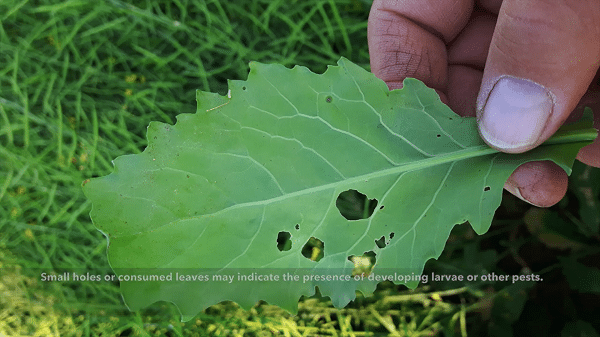
Watch pre-harvest intervals when spraying for insects
Some crops are advancing fairly quickly with the dry conditions. Just in case farmers do need to spray for insects, keep in mind that the pre-harvest interval for the chosen product might come up quicker than usual. If that is the case, select something with a short pre-harvest interval. Quickly compare products with the Spray to Swath Interval calculator.
New threshold tool for fighting lygus bugs
Ongoing dry conditions throughout the Prairies continue to make lygus bugs — a common pest in canola — a concern among producers. Scouting with a sweepnet is the bedrock tool for determining lygus presence in a canola crop and determining whether or not to spray. Thresholds for spraying have — since the ‘90s — been partially connected to crop value. However, research conducted by AAFC researcher Hector Carcano suggest a different approach to thresholds unrelated to these economic considerations. See New research driving threshold changes for lygus bugs for more information (scroll down to the first headline on the page). When scouting for lygus bugs or a wide host of other crop predators, consider using the Pests and Predators Field Guide — a publication full of practical tips for identifying and managing insect pests as well as identifying and protecting beneficial insects. Lygus bugs have natural enemies; a few of them are listed here.
Grasshopper scouting tips, predictions available
Dry conditions throughout western Canada have also increased the risk of grasshoppers in canola fields. Due to their considerable mobility, grasshoppers can be notoriously difficult to scout for. See the Grasshopper Canola Encyclopedia page for information. Additional scouting tips are available here and here. The latter link also includes Prairie-wide predicted grasshopper development as of July 4. The action threshold for grasshoppers is eight to 12 per square metre. Again, the Pests and Predators Field Guide is a recommended resource.
Bertha armyworm under control
Bertha armyworm is one of the most worrisome insect pests of canola, having caused severe infestations in the past. However, populations appear to be under control across the Prairies. For example, according to last week’s Manitoba Pest Update, “We are over half way through the trapping period, and all the counts in Manitoba are still in the low risk category.” Scouting information on Bertha armyworm is available here.
Sclerotinia spore tests show low risk on selected farms
The Canola Council of Canada agronomy team tried out a few sclerotinia spore tests this year. (For more on the three tests, please read this article in Canola Digest or this article in Country Guide.) Results, as you might expect due to the low-moisture conditions, were very low. Shawn Senko tested canola fields east of Saskatoon with spores showing up on just one of eight samples collected, indicating an overall “very low” risk. Clint Jurke on the Alberta-Saskatchewan border detected zero per cent levels in two tests. Nate Ort in Manitoba had 2.5 per cent in one test and zero per cent in the other. Without spores on petals, sclerotinia stem rot risk is very low. Read more about sclerotinia stem rot risk factors in Canola Encyclopedia. Information on sclerotinia testing is available here.
